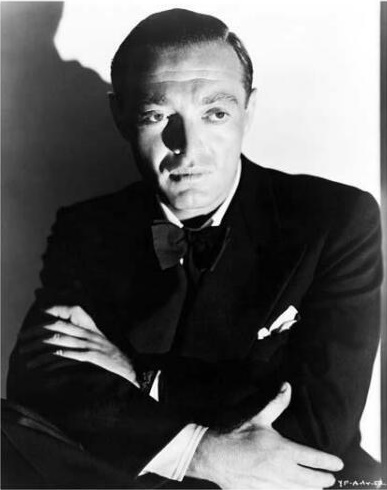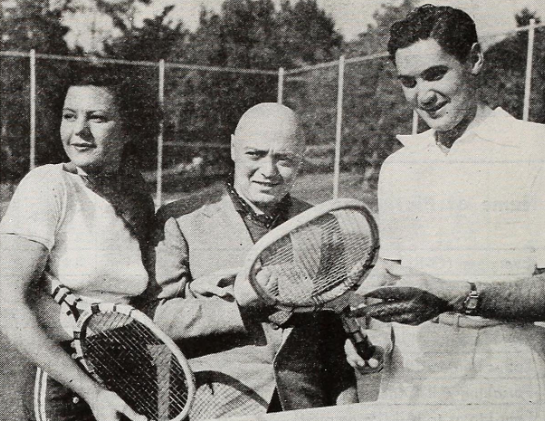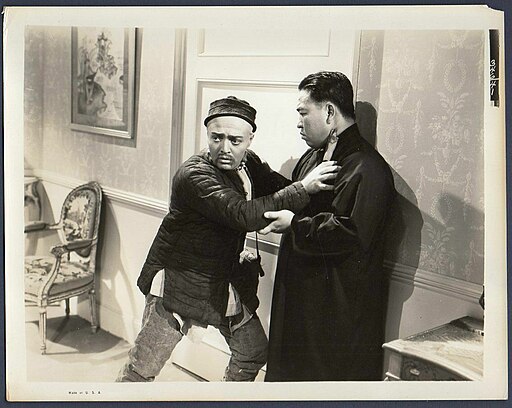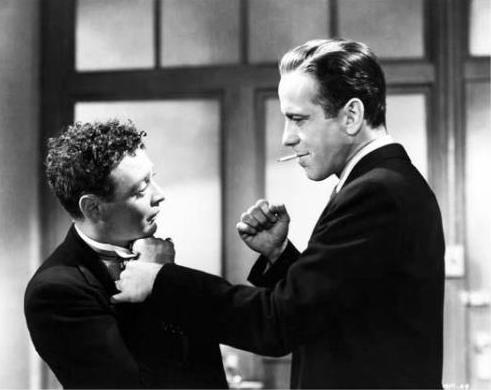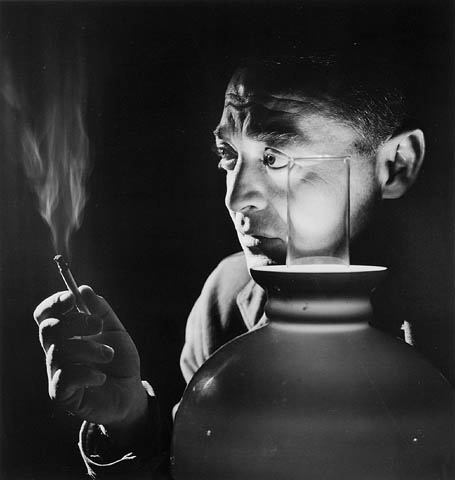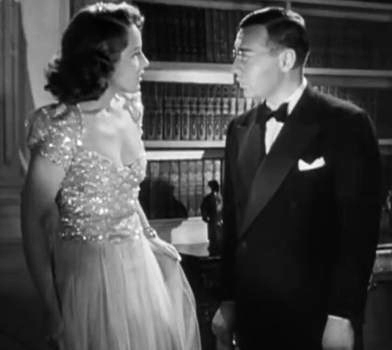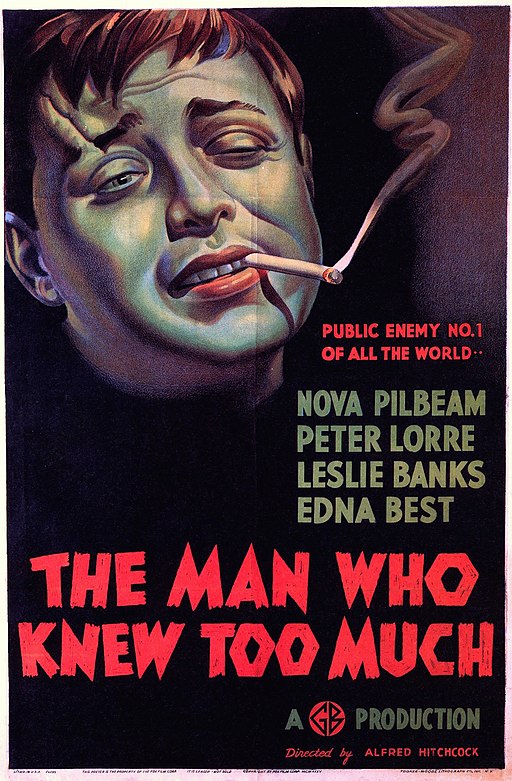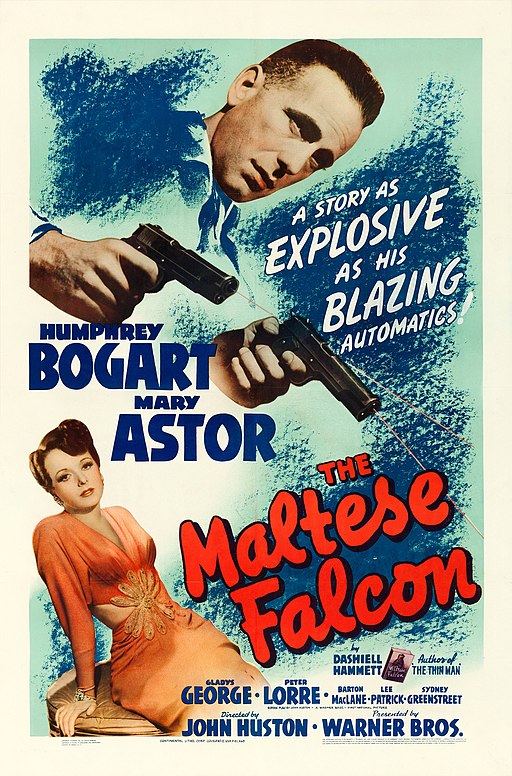Peter Lorre
back| Full Name | László Löwenstein |
| Stage Name | Peter Lorre |
| Born | June 26, 1904 |
| Birthplace | Rózsahegy, Kingdom of Hungary, Austro-Hungarian Empire |
| Died | March 23, 1964 |
| Buried | Hollywood Forever Cemetery, Hollywood, Los Angeles, California, USA |
| Married to | Celia Lovsky (1934–1945) - Kaaren Verne (1945–1950) - Annemarie Brenning (1953–1964, his death) |
| Children | Catharine Lorre Baker (daughter, with Annemarie Brenning) |
| Notable films | M (1931) - The Man Who Knew Too Much (1934) - Mad Love (1935) - The Maltese Falcon (1941) - Casablanca (1942) - Arsenic and Old Lace (1944) |
Peter Lorre
The Master of Menace
Peter Lorre was a distinguished actor known for his unique voice and intense character portrayals. His breakthrough came with Fritz Lang's "M" (1931), where his portrayal of a child murderer established him as a talent of immense depth.
Fleeing Nazi Germany, he transitioned to Hollywood, leaving a mark with roles in classics like "The Maltese Falcon" (1941) and "Casablanca" (1942). Often typecast as a villain, Lorre's performances were nuanced, blending menace with vulnerability.
Peter Lorre was often nicknamed "The Master of Menace" in his Hollywood career.
Related
Peter Lorre (1904 - 1964)
Biography and Overview of his Career
Peter Lorre, born as László Löwenstein on June 26, 1904, in Rózsahegy, Kingdom of Hungary (now Ružomberok, Slovakia), was a distinguished character actor known for his distinctive voice and performances in the film noir and mystery genres. His life, marked by significant transitions, both personal and professional, is a tale of artistic evolution and human complexity.
Early Years
Lorre's journey began in a small town in the Austro-Hungarian Empire. He showed an early interest in acting, a passion that would shape his entire life. After his family moved to Vienna, Lorre, captivated by the theatrical world, dropped out of school to pursue acting. His early career was a struggle, with Lorre performing in various provincial theaters across Europe. He eventually moved to Germany, where his career began to gain traction.
Path Towards Success
In Berlin, Lorre's acting career flourished. His breakthrough came with Fritz Lang's 1931 film "M," where he portrayed a child murderer. This role brought him international acclaim and showcased his unique talent for playing complex, often sinister characters. Lorre's performance in "M" was a masterclass in psychological depth, earning him recognition as a significant actor.
However, the rise of Nazism in Germany forced Lorre, who was Jewish, to flee to Paris and later to London, where he worked with Alfred Hitchcock in "The Man Who Knew Too Much" (1934). His move to Hollywood followed, where he found success in a series of memorable roles.
Hollywood Career and Marriages
In Hollywood, Lorre became a staple in the film noir genre. He starred in classics like "The Maltese Falcon" (1941) and "Casablanca" (1942), often playing villains or complex, quirky characters. Despite being typecast, Lorre's performances were always nuanced and deeply human.
Lorre's personal life was as eventful as his career. He was married three times: first to Celia Lovsky, then to actress Kaaren Verne, and finally to Annemarie Brenning, with whom he had his only child, Catharine.
Passions and Personal Struggles
Apart from acting, Lorre had a passion for chess and was known for his sharp intellect. However, he also faced personal struggles, including chronic health issues and a dependency on morphine, initially prescribed for severe pain due to gallbladder issues. This addiction haunted him for many years and significantly impacted his health and professional life.
Death and Legacy
Peter Lorre's life came to an early end on March 23, 1964, in Los Angeles. He died of a stroke, exacerbated by his health complications and substance abuse issues. He was 59 years old. Lorre left behind a legacy as one of the most distinctive actors of his time, known for his unique voice, expressive eyes, and ability to bring depth to even the most sinister of characters.
Lorre's body was laid to rest in the Hollywood Forever Cemetery in Los Angeles, leaving behind a filmography that continues to influence and captivate audiences. His life story, marked by exile, resilience, and artistic brilliance, remains a poignant reminder of the human dimension behind cinematic legends.
Marriages:
- Celia Lovsky (1934-1945): Celia Lovsky was an actress of Russian descent. She played a significant role in Lorre's life, especially during his transition from Europe to Hollywood. The couple divorced in 1945, but Lovsky remained an important figure in Lorre's life, even helping to manage his career at times.
- Kaaren Verne (1945-1950): Shortly after his divorce from Lovsky, Lorre married Kaaren Verne, a German actress. They met on the set of the film "The Face Behind the Mask" in 1941. However, their marriage was tumultuous, marked by Lorre's struggles with morphine addiction, and ended in divorce in 1950.
- Annemarie Brenning (1953-1964): His final marriage was to Annemarie Brenning, a German woman he met in 1952. They married in 1953, and their daughter, Catharine, was born in 1954. This marriage lasted until Lorre's death in 1964. Annemarie was by his side during his final years, which were plagued by health issues and career challenges.
Notable Movies featuring Peter Lorre
1930s
- 1931: "M": In Fritz Lang's classic thriller, Lorre plays Hans Beckert, a serial killer of children, drawing a portrait of a man driven by compulsions he cannot control.
- 1932: "Fünf von der Jazzband": A comedy where Lorre has a small role.
- 1933: "Bomben auf Monte Carlo": A musical comedy featuring Lorre in a supporting role.
- 1934: "The Man Who Knew Too Much": Directed by Alfred Hitchcock, Lorre stars as the villainous Abbott, involved in an international assassination plot.
- 1935: "Mad Love": Lorre portrays Dr. Gogol, a surgeon obsessed with an actress, leading to a dark path of madness and obsession.
- 1936: "Secret Agent": Another Hitchcock film where Lorre plays a quirky, murderous general.
- 1936: "Crack-Up": A suspense film where Lorre's character is involved in a plane crash mystery.
- 1937: "Nancy Steele Is Missing!": Lorre plays a kidnapper in this drama film.
- 1937: "Think Fast, Mr. Moto": The first in a series where Lorre plays the clever and resourceful detective Mr. Moto.
1940s
- 1940: "Strange Cargo": A drama where Lorre plays a convict in a penal colony.
- 1941: "The Face Behind the Mask": Lorre stars as Janos, a disfigured man who turns to a life of crime.
- 1941: "The Maltese Falcon": A film noir classic, featuring Lorre as Joel Cairo, a shady character entangled in the hunt for a valuable statuette.
- 1942: "All Through the Night": A gangster-comedy where Lorre plays a Nazi spy.
- 1942: "Casablanca": In this timeless classic, Lorre's character Ugarte provides the letters of transit integral to the plot.
- 1944: "Arsenic and Old Lace": Lorre is Dr. Einstein, an alcoholic surgeon, in this dark comedy.
- 1944: "The Mask of Dimitrios": A film noir where Lorre's character investigates the mysterious Dimitrios.
- 1946: "The Beast with Five Fingers": Lorre plays a nurse in this horror film about a murderous hand.
1950s
- 1951: "Der Verlorene" (The Lost One): A German film where Lorre not only stars but also directs, playing a doctor with a dark past.
- 1954: "Beat the Devil": A Humphrey Bogart film where Lorre plays a quirky criminal.
- 1954: "20,000 Leagues Under the Sea": Lorre takes on the role of Conseil in this Disney adaptation of Jules Verne's novel.
- 1956: "Around the World in 80 Days": Lorre plays a small role in this adventure film based on the novel by Jules Verne.
1960s
- 1960: "Scent of Mystery": In one of his final roles, Lorre plays a mysterious character in this crime-comedy film.
Analysis of Peter Lorre’s Acting Style:
Peter Lorre's acting style was a fascinating amalgamation of intensity, eccentricity, and a unique sense of vulnerability that he brought to his diverse range of characters. His style evolved from his European theater background to his iconic roles in American cinema, and he became known for a distinctively memorable on-screen presence.
Physicality and Voice
One of the most distinctive aspects of Lorre's acting was his physical presence. Despite his small stature, he had an ability to fill the screen with an imposing aura. His expressive face, particularly his large, round eyes, were incredibly effective in conveying a range of emotions, from fear and paranoia to sly cunning. This physical expressiveness was complemented by his voice, which was soft yet sinister, often imbuing his characters with a sense of eerie calmness or hidden menace. His voice had a melodic quality, with a slight accent that added an exotic touch to his characters.
Intensity and Emotional Range
Lorre's performances were marked by an intense emotional depth. He had a talent for portraying complex psychological states, making even the most villainous or troubled characters multi-dimensional and human. In films like "M," he brought a haunting vulnerability to his role as a troubled criminal, eliciting both fear and sympathy from the audience. This ability to navigate complex emotions made his performances deeply impactful and memorable.
Versatility and Characterization
Lorre was remarkably versatile, adapting his style to fit a wide range of genres and roles. From horror to comedy, film noir to drama, he showcased a breadth of talent. His approach to each character was nuanced and thoughtful, often adding subtle quirks or mannerisms that made each role distinctly his own. In comedic roles, such as in "Arsenic and Old Lace," he displayed excellent timing and a flair for dark humor. In contrast, his film noir roles, like in "The Maltese Falcon," exhibited a more subdued, calculating persona.
Influence and Legacy
Lorre's acting style was not just a product of his time; it influenced future generations of actors. His ability to bring depth to villainous roles paved the way for more nuanced portrayals of antagonists in cinema. He broke the mold of one-dimensional villains, showing that even characters on the fringes of morality could be complex and relatable.
Trivia
A] Height of Peter Lorre:
Peter Lorre was known to be relatively short in stature, standing at approximately 5 feet 3 inches (160 cm) tall.
B] Looney Tunes inspired by Peter Lorre:
Peter Lorre did not work for Looney Tunes in a direct capacity, such as voice acting or animation. However, his distinctive look and voice made a significant impact on popular culture, including animation. This influence led to the creation of various cartoon characters that were clearly inspired by him.
In Looney Tunes and other animated series, characters were often modeled after Lorre's unique persona, especially his roles as villains or mysterious figures. These caricatures would mimic his distinctive voice, mannerisms, and even his physical appearance. It's a testament to Lorre's iconic status in the entertainment industry that his style was so recognizable and influential that it transcended into the realm of animation.
Peter Lorre as Inspiration for Looney Tunes:
Significance of his Performance in “M”:
Peter Lorre's performance in the 1931 film "M" marked a pivotal point in his career and is often considered one of the most significant roles he ever played. Directed by Fritz Lang, "M" was a groundbreaking film in many aspects, and Lorre's portrayal of the child murderer Hans Beckert brought him international acclaim and established him as a significant figure in the world of cinema. Here's an analysis of the significance of this role for his career:
- International Recognition: "M" was Lorre's first major film role and his performance immediately catapulted him to international fame. His portrayal of a complex, tormented character was something relatively new and startling at the time and showcased his immense talent.
- Acting Prowess: The role demonstrated Lorre's ability to play deeply troubled and morally ambiguous characters, setting the stage for many of his future roles. His portrayal was nuanced, evoking both fear and sympathy from the audience, a testament to his skill in conveying complex psychological states.
- Villainous Roles: The success of "M" led to Lorre often being cast as a villain or a sinister character in many of his subsequent films. This typecasting was both a blessing and a curse; while it provided him with numerous roles in Hollywood, it also somewhat limited the range of characters he was offered.
- Influencing a Genre: Lorre’s performance in "M" had a significant impact on the film noir and crime genres. The character of Hans Beckert can be seen as a precursor to the complex, psychologically driven villains that would become a staple in these genres.
- Escape from Nazi Germany: The success of "M" gave Lorre the recognition and resources necessary to leave Germany following the rise of the Nazi regime. This move was crucial for his survival as a Jewish actor during this perilous time.
- Hollywood Career: "M" opened the doors to Hollywood for Lorre, where he would go on to have a prolific career. The film's success was a key factor in his transition to American cinema, where he made an indelible mark with roles in classics like "Casablanca" and "The Maltese Falcon."
Awards and Recognition:
Peter Lorre, despite his exceptional talent and significant impact on the film industry, did not receive a vast array of awards and nominations during his career. This lack of formal recognition is somewhat reflective of the era and the types of roles he often portrayed, which were frequently in supporting capacities or in genre films like horror and noir, which historically received less awards attention.
Awards and Nominations
- Venice Film Festival: In 1934, Lorre won the Volpi Cup for Best Actor for his role in the film "The Man Who Knew Too Much." This was a significant achievement, especially considering the international nature of the festival.
- Other Honors: While specific awards and nominations for his film roles were limited, Lorre's influence and contributions to cinema have been recognized posthumously. His iconic status in the film industry has been celebrated through various honors and tributes.
- Hollywood Walk of Fame: Peter Lorre was awarded a star on the Hollywood Walk of Fame, a testament to his lasting impact on the film industry. His star, located at 6619 Hollywood Boulevard, honors his work in motion pictures.
- Cultural Impact: Beyond formal awards, Lorre's influence extends into the broader cultural landscape. His characters, especially in films like "M" and "The Maltese Falcon," have become archetypal and continue to be studied and admired for their complexity and innovation.
Memorable Quotes from Peter Lorre:
Peter Lorre, known for his distinctive voice and memorable screen presence, delivered many iconic lines throughout his career. Here are some of the most memorable quotes from his films:
From "M" (1931):
"I can't help what I do! I can't help it, I can't..."
From "The Maltese Falcon" (1941):
As Joel Cairo: "You always have a very smooth explanation ready."
"When you're slapped, you'll take it and like it."
From "Casablanca" (1942):
As Ugarte: "Rick, I hope you're more impressed with me now. If you'll excuse me, I'll share my good luck with your roulette wheel."
From "Arsenic and Old Lace" (1944):
As Dr. Einstein: "This is a very strange house."
From "The Beast with Five Fingers" (1946):
As Hilary Cummins: "Sometimes I feel there are doors lurking in the shadows of my consciousness... and now and then I get a glimpse behind them, and what I see there frightens me."
From "Mad Love" (1935):
As Dr. Gogol: "I, who have dealt with death, am now concerned with life."
Full List of Movies with Peter Lorre:
1930s
- 1931: "M"
- 1931: "Die Koffer des Herrn O.F."
- 1932: "Schuss im Morgengrauen"
- 1932: "Fünf von der Jazzband"
- 1932: "Stupéfiants"
- 1933: "Bomben auf Monte Carlo"
- 1933: "Was Frauen träumen"
- 1934: "The Man Who Knew Too Much"
- 1934: "Liebelei"
- 1935: "Mad Love"
- 1935: "Crime and Punishment"
- 1936: "Secret Agent"
- 1936: "Crack-Up"
- 1937: "Nancy Steele Is Missing!"
- 1937: "Lancer Spy"
- 1937: "Think Fast, Mr. Moto"
- 1937: "Thank You, Mr. Moto"
- 1938: "Mr. Moto's Gamble"
- 1938: "Mr. Moto Takes a Chance"
- 1938: "I'll Give a Million"
- 1938: "Mysterious Mr. Moto"
- 1939: "Mr. Moto's Last Warning"
- 1939: "Mr. Moto Takes a Vacation"
1940s
- 1940: "Strange Cargo"
- 1940: "I Was an Adventuress"
- 1941: "The Face Behind the Mask"
- 1941: "Mr. District Attorney"
- 1941: "They Met in Bombay"
- 1941: "The Maltese Falcon"
- 1942: "All Through the Night"
- 1942: "Invisible Agent"
- 1942: "The Boogie Man Will Get You"
- 1942: "Casablanca"
- 1943: "The Constant Nymph"
- 1943: "Background to Danger"
- 1944: "Passage to Marseille"
- 1944: "The Mask of Dimitrios"
- 1944: "Arsenic and Old Lace"
- 1944: "The Conspirators"
- 1945: "Hotel Berlin"
- 1945: "Hollywood Canteen"
- 1946: "Black Angel"
- 1946: "The Beast with Five Fingers"
- 1946: "Three Strangers"
- 1947: "The Chase"
- 1947: "My Favorite Brunette"
- 1947: "The Verdict"
- 1948: "Rope of Sand"
- 1949: "Quicksand"
1950s
- 1950: "Double Confession"
- 1950: "The Man Who Cheated Himself"
- 1951: "Der Verlorene"
- 1953: "Beat the Devil"
- 1954: "20,000 Leagues Under the Sea"
- 1954: "Casanova's Big Night"
- 1956: "Congo Crossing"
- 1956: "Around the World in 80 Days"
- 1957: "The Buster Keaton Story"
- 1957: "The Story of Mankind"
- 1957: "The Sad Sack"
- 1959: "The Big Circus"
1960s
- 1960: "Scent of Mystery"
- 1961: "Voyage to the Bottom of the Sea"
- 1962: "Five Weeks in a Balloon"
- 1963: "The Raven"
- 1963: "The Comedy of Terrors"
- 1964: "The Patsy"

